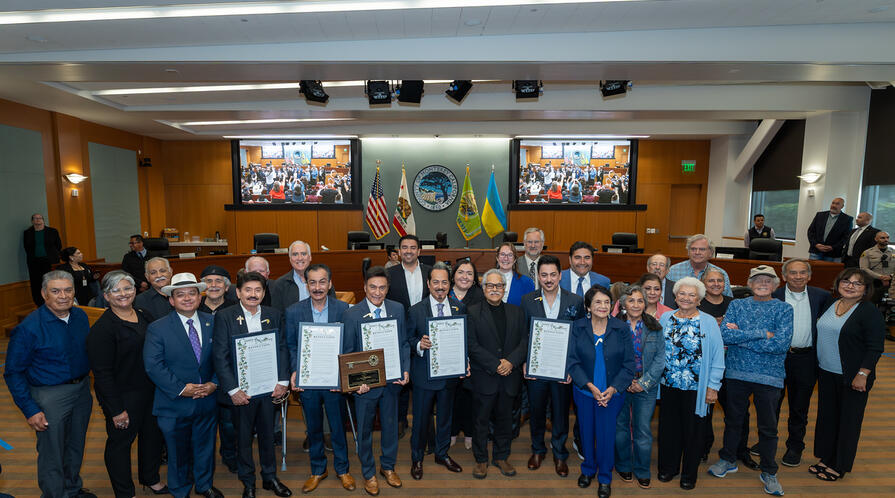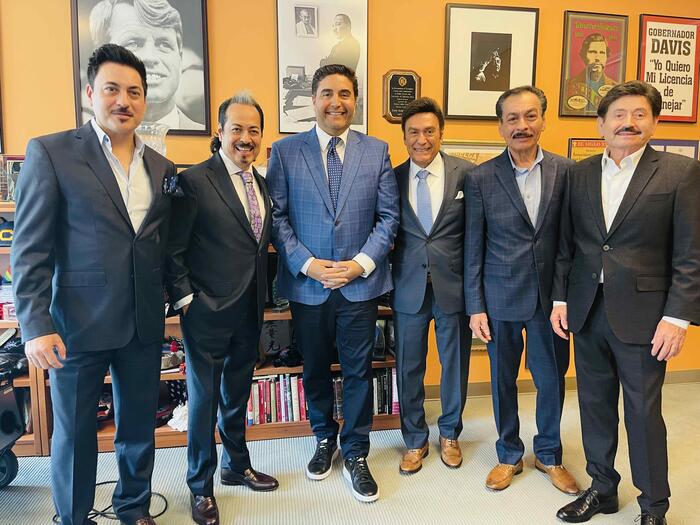Reflections on My Archival Research at 91│į╣Ž and Public History
Reflections on My Archival Research at 91│į╣Ž and Public History
91│į╣Ž Curriculum Consultant Dr. Ignacio Ornelas Rodriguez shares his research into the legal and civil rights advocacy of key Mexican American leaders and institutions.

My archival research at 91│į╣Ž has focused on the legal and civil rights advocacy of key Mexican American leaders and institutions, including civil rights scholar Ernesto Galarza; voting rights attorney and co-author of the California Voting Rights Act Joaquin Avila; and the organizational records of the Mexican American Legal Defense and Educational Fund (MALDEF) and California Rural Legal Assistance, Inc. (CRLA). These legal organizations have played a critical role to advance the civil and voting rights of Latino communities, utilizing litigation as a strategic tool to secure equal protection under the law and promote equitable political representation through legislation. The collections offer extensive documentation of decades-long legal struggles and grassroots advocacy, illuminating both national and transnational dimensions of Latino American civil rights movements.
My research has also included conducting oral history interviews with prominent legal and civil rights leaders, such as General Counsel Thomas A. Saenz, current MALDEF President; Jos├® Padilla, former CRLA Executive Director; Ambassador Vilma Martinez, former General Counsel of MALDEF; and the only oral history ever conducted with the late Joaquin Avila, voting rights attorney and former General Counsel of MALDEF. These interviews, which are archived and publicly available through the Stanford Department of Special Collections and the Stanford Historical Society, offer invaluable firsthand accounts of the legal strategies, institutional histories, and personal commitments that have shaped Latino civil rights advocacy over the past several decades.
During the past 15 years of conducting research at Stanford, I have been consistently inspired by the dedication of lawyers and advocacy organizations working to improve the lives of marginalized communities. One formative moment occurred when I first encountered archival photographs from the 1950s of former braceros, legally contracted guestworkers. The Bracero Program was a binational labor agreement between the United States and Mexico that brought over two million braceros to the United States from 1942 to 1964. These images offered powerful visual narratives of migration, labor, and hopeŌĆöstories reminiscent of iconic photographs of immigrants arriving at Ellis Island. However, these photographs pointed to a different but equally significant point of entry: The U.S.ŌĆōMexico border. This research solidified my commitment to public scholarship and the importance of making archival materials accessible to broader audiences.
Through my research in the Stanford Department of Special Collections and ongoing collaboration with the Stanford Program on International and Cross-Cultural Education (91│į╣Ž), as well as through teaching and public engagement, I have developed initiatives aimed at bridging the gap between academic research and public history. I founded the to share these important histories with wider audiences and have continued this work by designing ethnic studies curricula for school districts and organizing educational events that highlight the contributions and experiences of Latino communities in the United States.
This commitment to public history culminated most recently on June 10, 2025, when I co-organized, alongside Monterey County Supervisor Luis Alejo, a public commemoration marking the 50th anniversary of the banning of the short-handled hoeŌĆöa tool that had long symbolized exploitation in agricultural labor. Used for over a century by farmworkers of multiple ethnic backgrounds, the short-handled hoe required workers to remain stooped over for long periods at a time, leading to chronic injuries and long-term disability. Labor leader C├®sar Ch├Īvez himself suffered from debilitating back pain as a result of such work. The tool was officially banned on April 7, 1975, following the tireless advocacy of local farmworkers Sebastian Carmona and Hector De La Rosa, who, with legal representation from CRLA attorneys Marty Glick and Mo Jourdane, successfully brought the case before the California Supreme Court. The Mercury News opinion piece, [May 30, 2025], ŌĆ£Farmworker victory ending use of ŌĆśEl CortitoŌĆÖ 50 years ago,ŌĆØ noted that the victory provided an ŌĆ£empowering lesson.ŌĆØ
The anniversary event brought together over 200 people and distinguished guests including Glick, Jourdane, and other CRLA alumni, as well as iconic figures such as labor and civil rights leader Dolores Huerta and playwright Luis Valdez, who spoke about the ŌĆ£long civil and labor rights movements.ŌĆØ I also invited the legendary music group Los Tigres del Norte, who hold a special cultural resonance in the Latino community. Their music shaped my immigrant upbringing, reflecting the complexities of navigating bicultural identity, bilingualism, and persistent anti-immigrant sentiment. Their songsŌĆösuch as ŌĆ£La Jaula de Oro,ŌĆØ ŌĆ£Somos M├Īs Americanos,ŌĆØ ŌĆ£Campesino,ŌĆØ and their tribute to C├®sar Ch├ĪvezŌĆöarticulate the lived experiences of immigrant communities and assert a counternarrative of dignity, resilience, and resistance in the face of marginalization.

Jorge Hern├Īndez, co-founder of Los Tigres del Norte, has often spoken about the groupŌĆÖs first U.S. performance at Soledad Prison in 1968ŌĆöthe same year Johnny Cash played at Folsom State Prison. Since then, they have received multiple Grammy Awards, sold out Madison Square Garden, and, this past summer, were honored with a namesake street in Brooklyn. During the Monterey County event, Supervisor Alejo and the Board of Supervisors presented Los Tigres del Norte with a lifetime achievement award recognizing not only their musical legacy but also their decades-long advocacy on behalf of immigrant and Latino communities. Photo above: Dr. Ornelas (third from the left) pictured with Los Tigres del Norte band members (left to right) Luis Hern├Īndez, Hernan Hern├Īndez, Jorge Hern├Īndez, Eduardo Hern├Īndez, and ├ōscar Lara | photo credit: Pep Jimenez.
As part of our continued collaboration, I have invited Los Tigres del Norte to visit the Department of Special Collections at Stanford to study Ernesto GalarzaŌĆÖs personal papers and bracero correspondence. In particular, we will examine GalarzaŌĆÖs documentation of the 1963 ŌĆ£Tragedy at Chualar,ŌĆØ in which 32 braceros were killed in a devastating collision between a makeshift bus and a train. Galarza served as the principal investigator of the accident, and the archival record he left offers profound insights into the structural neglect and human cost of exploitative labor systems. Our hope is to draw from these materials to inspire a new song that honors the 32 bracero lives lost and continue to educate the public about this overlooked chapter in U.S. history.
This kind of scholarly interdisciplinary and community-based collaboration underscores the vital role of archives and public scholarship in shaping collective memory and advancing civil rights education. As I continue my work with 91│į╣Ž and within the Stanford Department of Special Collections, I remain committed to collaborating with scholars across disciplines and transnationally to deepen public understanding of Latino American history and to ensure that these stories are not only preserved but heard.
To stay informed of 91│į╣Ž news, and follow us on , , and .



